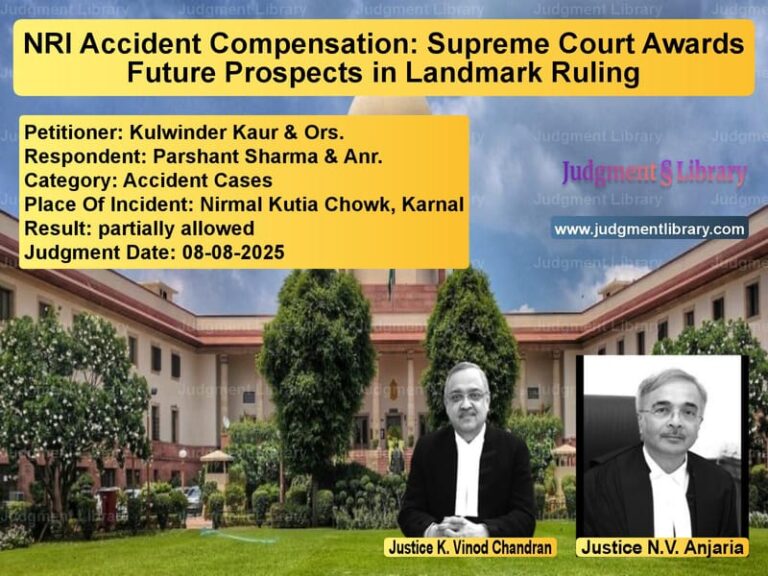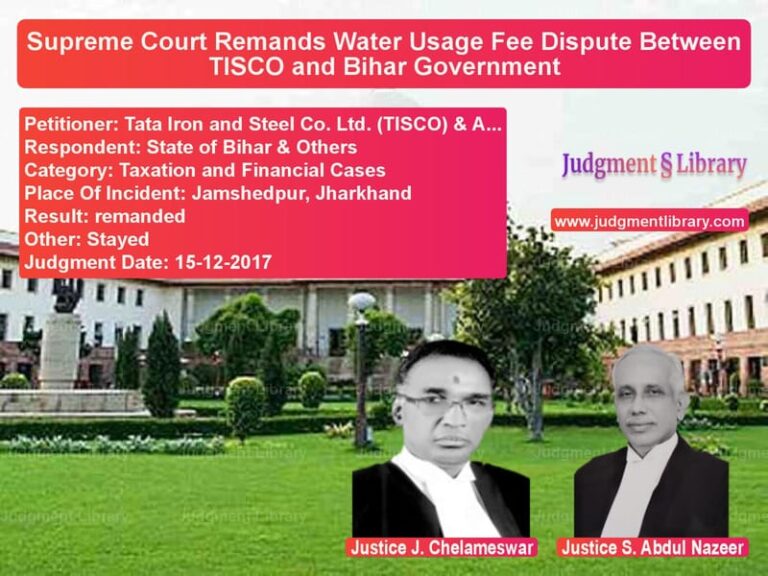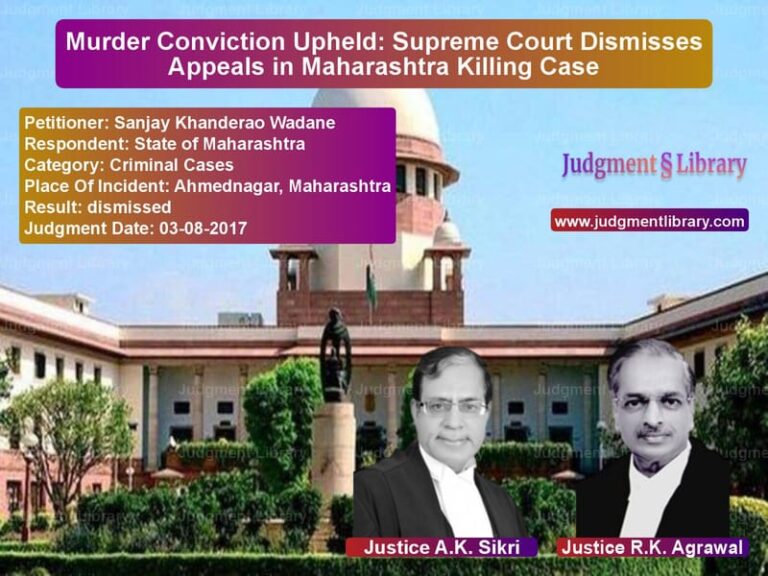Supreme Court Ruling on Disaster Management Act: Gaurav Kumar Bansal vs. Union of India
The Supreme Court in Gaurav Kumar Bansal vs. Union of India addressed critical issues concerning the implementation of the Disaster Management Act, 2005. The case arose due to the 2013 Uttarakhand floods and landslides, which caused extensive damage to life, property, and infrastructure. The petitioners argued that had the authorities properly implemented the Act, much of the devastation could have been mitigated.
Background of the Case
The disaster in Uttarakhand in 2013 led to thousands of deaths and large-scale displacement. The petitioners, Gaurav Kumar Bansal and Foundation for Restoration of National Values, filed Writ Petitions under Article 32 of the Constitution, contending that the Union and State Governments had failed in their duty to prepare for and manage disasters effectively.
The key allegations included:
- The lack of implementation of the Disaster Management Act, 2005.
- The absence of a comprehensive National Plan for Disaster Management under Section 11 of the Act.
- Failure of states to formulate State and District Disaster Management Plans as required under Sections 23 and 31.
- Non-compliance with guidelines regarding minimum standards of relief for disaster victims.
Legal Issues Involved
1. Implementation of the Disaster Management Act
Whether the Union and State Governments had adequately complied with the provisions of the Act, particularly Sections 11, 12, 17, 23, and 31.
2. Formulation of the National and State Disaster Management Plans
Whether the lack of a National Plan and the delay in State and District Plans constituted a failure in governance.
3. Minimum Standards of Relief
Whether the authorities had provided adequate relief, including food, water, sanitation, and medical care, to disaster-affected individuals.
Arguments Presented
Petitioners’ (Gaurav Kumar Bansal & Others) Arguments
- The Union and State Governments had failed to implement the Disaster Management Act effectively.
- Many states had not formulated State and District Disaster Management Plans, which are mandatory under the Act.
- There was no proper National Plan for Disaster Management at the time of the disaster.
- The government had failed to set and follow minimum standards of relief as mandated by the Act.
Respondents’ (Union of India) Arguments
- The government had taken steps to address disaster preparedness and relief efforts.
- A communication dated February 25, 2016 had been sent to all Chief Secretaries requiring them to frame minimum standards of relief.
- By April 5, 2016, a National Plan had been drafted.
- All states, except Andhra Pradesh and Telangana, had formulated their State Disaster Management Plans.
Supreme Court’s Observations
The Supreme Court reviewed the government’s compliance with the Act and made the following key observations:
- Many states had not complied with their obligations under the Act, leading to inadequate disaster preparedness.
- It took ten years after the passage of the Act for most states to start preparing their Disaster Management Plans.
- The failure of states to respond to the National Disaster Management Authority (NDMA) showed a lack of urgency.
Key Verbal Arguments by the Court
“It is unfortunate that more than 10 years after the passage of the Act by Parliament, many of the States had not taken adequate steps to ensure that the requirements under the Act were complied with and disaster management plan formulated.”
“All we need say is that it is absolutely necessary for the NDMA constituted at the national level and the State Disaster Management Authority at the State level to be ever vigilant and ensure that if any unfortunate disaster strikes, there should be total preparedness and that minimum standards of relief are provided to all concerned.”
Final Judgment
The Supreme Court ruled:
- The petitions were disposed of as the government had taken adequate steps since the filing of the petitions.
- The National Disaster Management Plan was now in place and published on the NDMA website.
- The court directed all authorities to continue reviewing and updating their disaster management plans.
Significance of the Judgment
This ruling has significant implications for disaster preparedness:
- It establishes that disaster management is a legal obligation, not just a policy concern.
- It ensures that minimum relief standards are set and followed.
- It requires authorities to remain vigilant and take disaster preparedness seriously.
Conclusion
The Supreme Court’s judgment in Gaurav Kumar Bansal vs. Union of India reinforces the importance of implementing the Disaster Management Act in letter and spirit. The ruling serves as a reminder that proactive disaster preparedness can save lives and minimize damage.
Don’t miss out on the full details! Download the complete judgment in PDF format below and gain valuable insights instantly!
Download Judgment: Gaurav Kumar Bansal vs Union of India & Ors Supreme Court of India Judgment Dated 08-05-2017.pdf
Direct Downlaod Judgment: Direct downlaod this Judgment
See all petitions in Public Interest Litigation
See all petitions in Emergency Provisions
See all petitions in Judgment by Madan B. Lokur
See all petitions in Judgment by Deepak Gupta
See all petitions in dismissed
See all petitions in supreme court of India judgments May 2017
See all petitions in 2017 judgments
See all posts in Constitutional Cases Category
See all allowed petitions in Constitutional Cases Category
See all Dismissed petitions in Constitutional Cases Category
See all partially allowed petitions in Constitutional Cases Category







